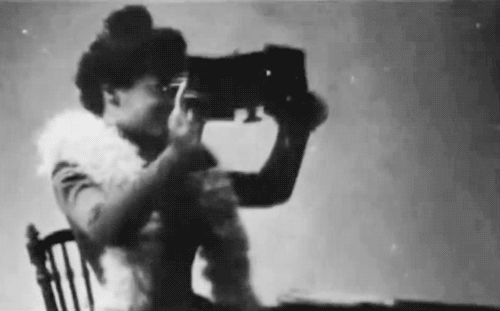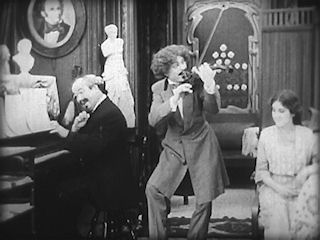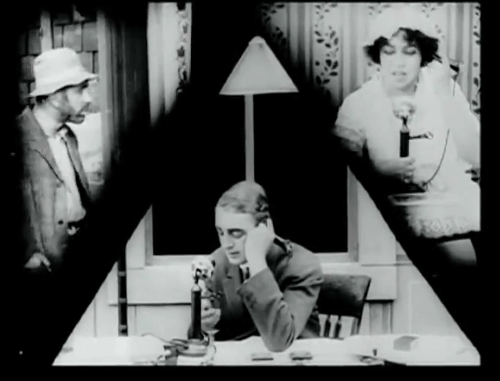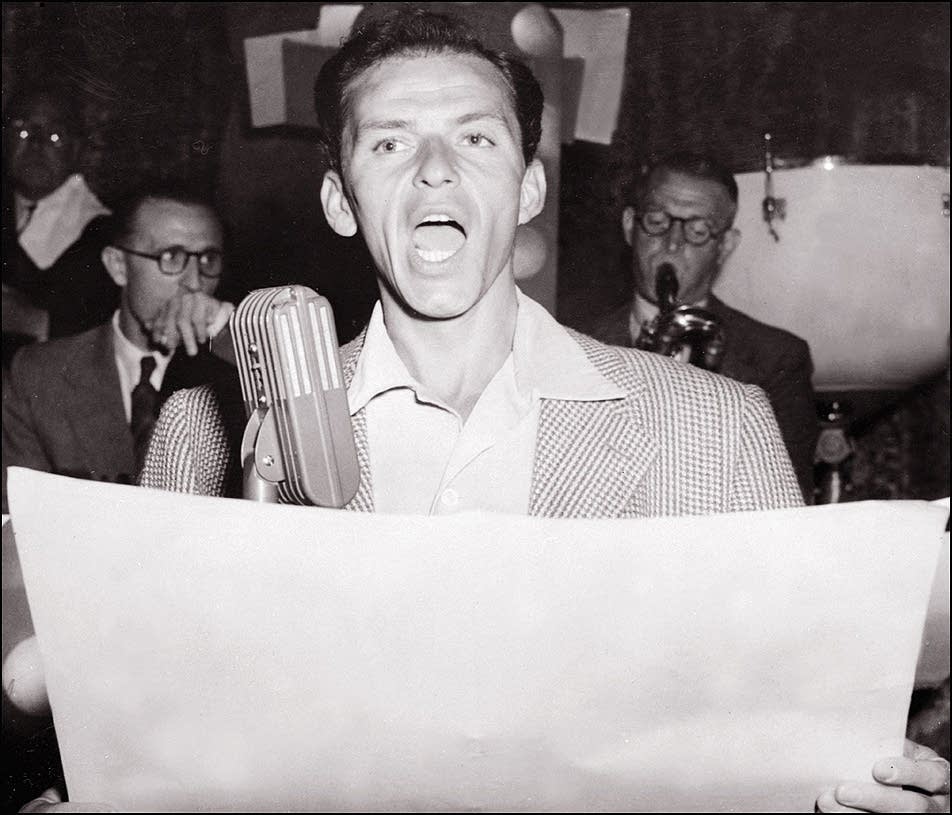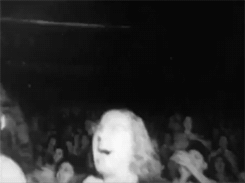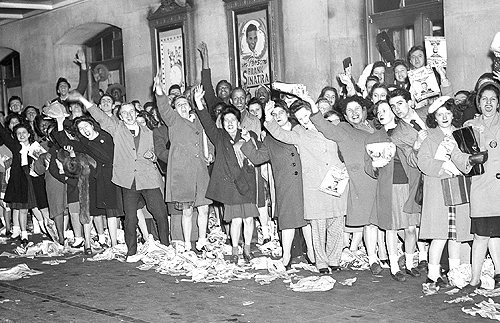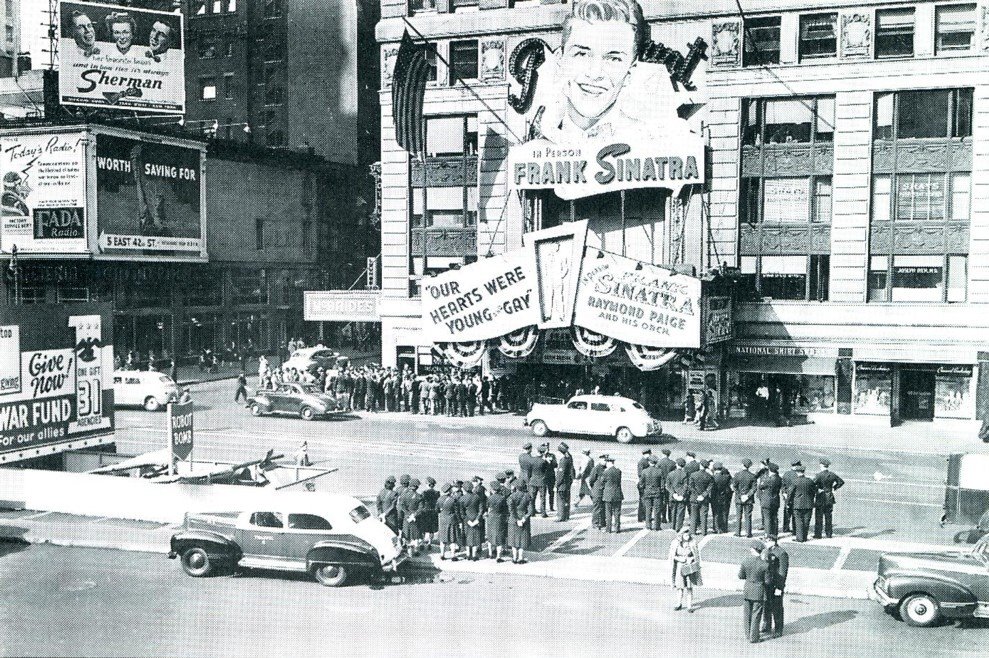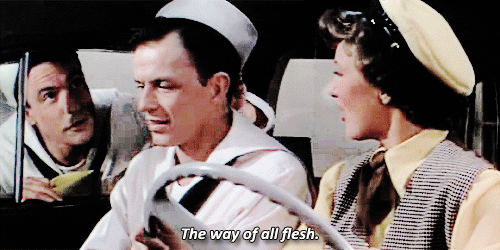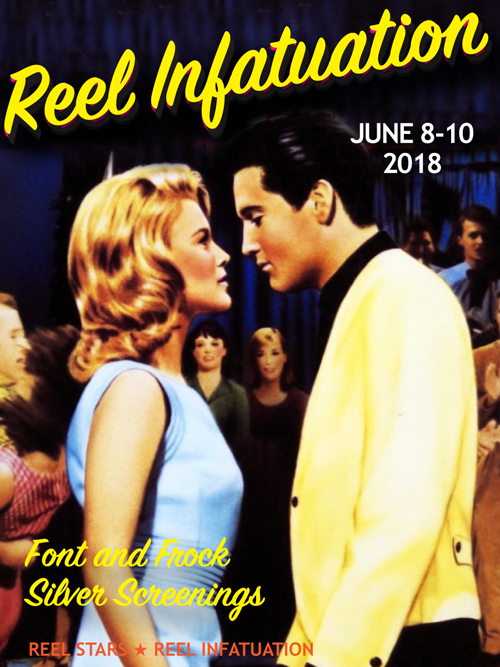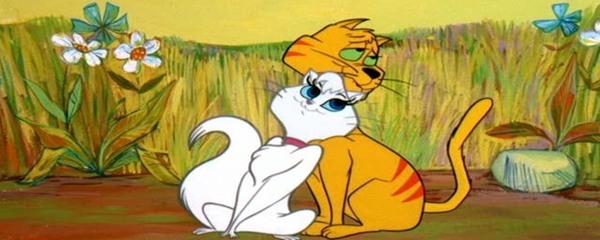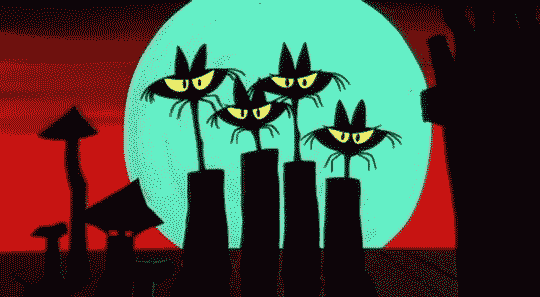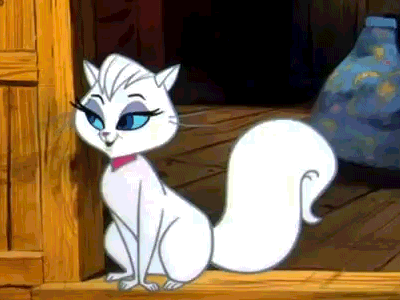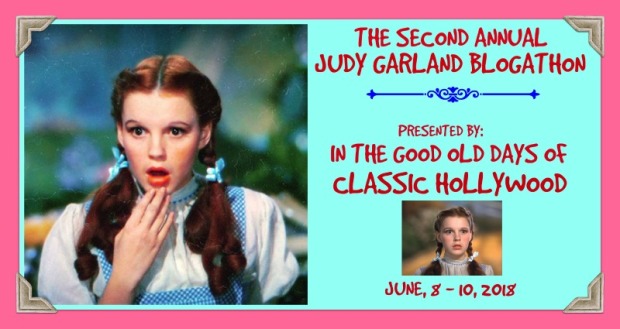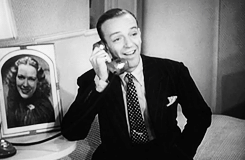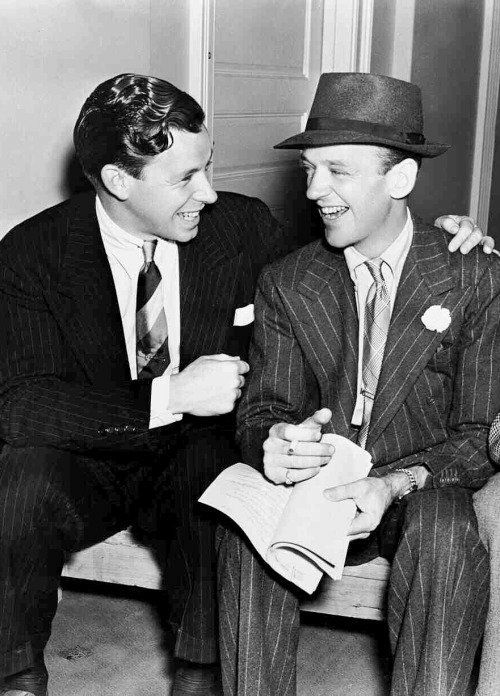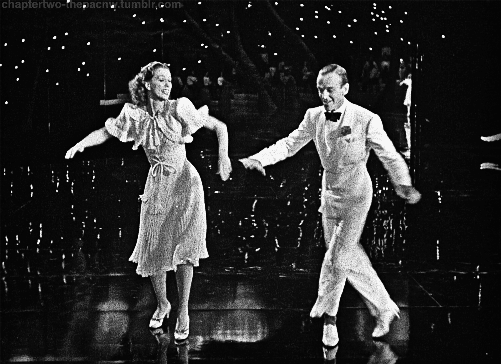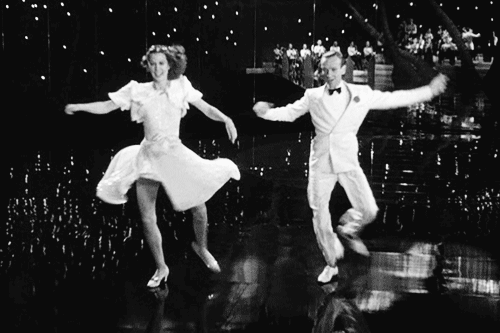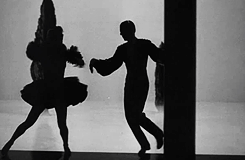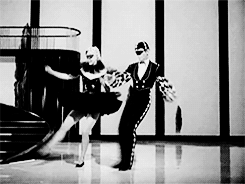Eu amo desafios – especialmente
quando eles envolvem filmes. Por isso, quando a Fritzi do site Movies, Silently
propôs um desafio de primavera para nós, amantes do cinema, eu tive de aceitar.
O desafio consiste em ver dez filmes bem antigos. Mas estes não são filmes
antigos como “O Cantor de Jazz” (1927) ou “Hollywood Revue” (1929). Nós
tínhamos de ver 10 filmes feitos antes de 1914.
I love challenges - especially when they involve
movies. So, when Fritzi from the site Movies, Silently proposed a springtime
challenge for us, movie lovers, I had to join. The challenge consists in
watching ten early movies. But those aren’t early movies like “The Jazz Singer”
(1927) or “The Hollywood Revue” (1929). We had to watch 10 films from 1914 or
before.
Isso é difícil? Nem um pouco. Por
isso eu resolve deixar as coisas mais interessantes criando minha própria
regra: no espírito do meu site colaborativo e feminista, Cine Suffragette, eu
veria dez filmes estrelados por mulheres ou, de preferência, com mulheres atrás
das câmeras – como produtoras, roteiristas ou diretoras. E, bem, ainda ficou
fácil! Vamos ver o que eu consegui...
Is it difficult? Not at all. So I decided to spice
things up and created my own rule: in the spirit of my collaborative feminist site
Cine Suffragette, I’d watch ten films starring women or, preferably, with women
behind the cameras - as producers, writers or directors. And, well, it was
still easy! Let’s see what I came up with..
Cinco
filmes feitos em 1905 ou antes:
Five Movies made
in 1905 or before:
Carmencita (Estrelando Carmencita,
1894): Eu posso ter trapaceado
com este, mas aqui está uma curiosidade interessante: a dançarina espanhola
Carmencita foi provavelmente a primeira mulher a ser filmada nos Estados
Unidos. O diretor William K.L. Dickson fazia experimentos com câmeras desde a
série Monkeyshine, em 1890, e demorou quatro anos para finalmente filmar uma
mulher. Esta exibição de dança de apenas um minuto foi a primeira e única
experiência de Carmencita no cinema, enquanto Dickson fundou em 1895 o estúdio
que depois viria a ser conhecido como Biograph.
Carmencita (Starring Carmencita, 1894): I may be cheating on this one, but here it is some
interesting trivia: Spanish dancer Carmencita is probably the very first woman
to appear in a motion picture in the US. Director William K.L. Dickson was
making experiments with cameras since his Monkeyshine series in 1890, and it
took him four years to finally film a woman. This one minute long dancing
exhibition was the first and only experience Carmencita had with films, while
Dickson founded in 1895 the studio later known as Biograph.
Cendrillon (Estrelando Jeanna D’Alcy,
1899): Georges Méliès leva o
conto de fadas da Cinderela para as telas pela primeira vez em 1899. Como a
fada madrinha, temos a esposa de Méliès, Jeanne D’Alcy. Assim como tudo o mais
que o pioneiro do cinema fez, sua Cinderela é divertida e cheia de truques –
sempre que um desejo é concedido à nossa heroína, um pouquinho de mágica
acontece nas telas. Há também o uso de transições interessantes em várias
ocasiões. Não há maneira melhor de passar cinco minutos ociosos do que com
Méliès.
Cendrillon (Starring Jeanne D’Alcy, 1899): Georges Méliès brings the Cinderella fairy tale
for the first time to the screen in 1899. As the fairy godmother, we have
Méliès’s wife, Jeanne D’Alcy. As everything the pioneer did, his Cinderella is
amusing and full of clever tricks whenever a wish was granted for our heroine.
There is also the interesting use of “dissolve” transition in several
occasions. There is no better way to spend five lazy minutes than with Méliès.
Pierrette’s Escapade (Dirigido por
Alice Guy, 1900): A
Pierrette conversa com o Pierrot através de gestos muito teatrais e enérgicos.
E então, quando ele não está olhando, ela dá uma ‘escapadinha’ com a Arlequina,
dançando com ela e beijando-a – sim, é um pequeno romance LGBT de 118 anos
atrás. A dança é uma das melhores coisas aqui – a outra é que este é um filme
colorido! O filme foi pintado à mão e, mesmo que a versão em domínio público
esteja em condições não tão boas, ainda é possível aproveitar o filme, que nos
mostra como as cineastas estavam sempre procurando trazer realismo e novidades
para o público.
Pierrette’s Escapades (Directed by Alice Guy,
1900): The Pierrette
talks to the Pierrot putting a lot of energy in her very theatrical gestures.
And then, when he is not looking, she makes an escapade with the Harlequin,
dancing and kissing her - yeah, it’s a petit 118 year-old LGBT romance. The
dance is one of the best things here - the other being the color! The film was
hand-tinted and, even if the public domain print is not in the best conditions,
it is still enjoyable and shows us how filmmakers were always looking for
realism and novelties for the audience.
A Parteira
da Classe Média (Dirigido por Alice Guy, 1902): Os
nostálgicos tinham razão: a vida era bem melhor no começo do século. Por
exemplo, um casal que decidia ter um filho – depois de o homem insistir muito –
poderia simplesmente... comprar um bebê de uma parteira! Sem dor, sem bagunça,
sem sangue. Obviamente, isso era uma fábula, e Alice Guy já a havia filmado em
1896, também para o estúdio Gaumont, em “A Fada do Repolho”: era a velha
superstição de que meninas nasciam de rosas, e meninos, de repolhos. O casal
quer um menino – eu até acho que consegui ler os lábios da moça dizendo
“garçon” – mas não ficam contentes com as opções mostradas pela parteira.
Então, a parteira leva os dois até uma plantação de repolhos e começa a tirar
BEBÊS DE VERDADE dos repolhos.
Midwife to
the Upper Classes (Directed by Alice Guy, 1902): Nostalgic
people were right: life was much better in the beginning of the century. For
instance, a couple that decided to have a baby – after the man insists on the
issue – could just... buy one with a midwife! No pain, no mess, no blood. Of
course, this was a fable, and Alice Guy had already filmed it in 1896, also for
the Gaumont studio, in “The Cabbage Fairy”: the old wives' tale that baby girls
came from roses, and baby boys, from cabbages. The couple wants a boy – I even
think I can read the woman's lips saying “garçon” - but is not happy with the
“ready-made” options. So the midwife just shows them a cabbage field and starts
taking REAL BABIES from the cabbage.
The Spring
Fairy (1902): Este pequeno filme tem duas personagens femininas,
mas infelizmente os nomes das atrizes que as interpretam são desconhecidos. O
filme conta a história de um casal solitário que dá comida e abrigo a uma velha
senhora durante um dia de inverno. A velha senhora revela, na verdade, ser uma
fada, e concede um desejo ao casal, porque eles foram bondosos com ela. O casal
quer um bebê, e a fada transforma um pouco da neve em flores e das flores o
casal tira duas meninas – parece que a nossa fada aprendeu algumas coisas com
Alice Guy! E deixe-me dizer que tanto o vestido da fada quanto as flores de
primavera são pintadas de amarelo, enquanto o resto da cena continua em preto e
branco – um truque de cor bolado pelo incrível Segundo de Chomón.
The Spring Fairy (1902): This little film has two female characters, but
unfortunately the names of the actresses portraying them are unknown. The film
depicts the story of a lonely couple that gives food and shelter to an old
woman during a cold winter day. The older woman reveals to be, actually, a
fairy, and concedes the couple a wish, because they were nice to her. The
couple wants a baby, so she transforms some of the snow into flowers and from
the flowers the couple collects two baby girls – it looks like our fairy learned
a few things with Alice Guy! And let me say that both the fairy’s dress and the
spring flowers are painted in yellow, while the rest of the scene remains in
black and white - a color trick applied by the great Segundo de Chomón.
Cinco filmes feitos entre 1906 e 1914:
Five Movies
made between 1906 and 1914:
Canned
Harmony (Dirigido por Alice Guy-Blaché, 1912): Que
diferença dez anos fazem! Alice se casou com Herbert Blaché em 1907 e foi para
os EUA. Em 1912, ela já assinava como Alice Guy-Blaché e tinha seu próprio
estúdio, Solax, onde ela fez “Canned Harmony” e muitos, muitos outros filmes.
Aqui, um professor de música só aceita que um músico virtuoso se case com sua
filha, Evelyn (Blanche Cornwall). O namorado de Evelyn, Billy (Billy Quirk),
sofre muito com esta exigência, até que seu colega de quarto o aconselha a usar
um fonógrafo e um disco de um violinista para impressionar o futuro sogro. Sim,
esta é uma comédia muda que depende do som para ser engraçada – e funciona! É
interessante notar como, neste filme em particular, os intertítulos são usados
para explicar a ação antes de ela acontecer. E há também um uso notável da tela
dividida.
Canned Harmony (Directed by Alice
Guy-Blaché, 1912): What
a difference 10 years make! Alice married Herbert Blaché in 1907, and
then went to the US. By 1912, she signed as Alice Guy-Blaché and had her own
studio, Solax, where she made “Canned Harmony” and many, many more films. In
this, a music professor will only accept a virtuoso musician to marry his
daughter, Evelyn (Blanche Cornwall). Evelyn's beau, Billy (Billy Quirk), will
suffer a lot with this exigency, until his roommate tells him to use a
phonograph and a record of a violin virtuoso to impress his future
father-in-law. Yes, this is a silent comedy that relies on sound to be funny –
and it works! It's interesting that, in this particular film, the intertitles
are used to explain the action before it happens. And there is also a notable
use of split screen.
His Mother
(Escrito e estrelado por Gene Gauntier, 1912): Dois
turistas americanos estão na Irlanda quando ouvem uma melodia maravilhosa. O
senhor Foster, um banqueiro, e sua filha (Gene Gauntier) descobrem que a música
vem de uma casa pobre, onde o jovem Terence (J.J. Clark) toca seu violino. O
senhor Foster dá seu cartão a ele, para quando Terence for à Nova York. Alguns
meses depois, a mãe de Terence (Anna Clark – não sei se ela era de fato parente
de J.J., mas me parece que não) dá a ele todas as suas econômicas para comprar
uma passagem para Nova York. Terence faz isso e obtém sucesso, mas com o êxito
profissional e a felicidade ele se esquece de mandar notícias para a mãe. Então
a velha senhora decide ir atrás dele. E um filme simples, emocionante e com
cenários ricamente decorados.
His Mother (Written and starred by Gene Gauntier,
1912): Two American
tourists are in Ireland when they hear an incredible music. Mr Foster, a banker,
and his daughter (Gene Gauntier) find out that the music comes from a poor
house, where Terence (J.J. Clark) plays his
violin. Mr Foster gives the man his card, for when the man goes to New York. A
few months later, the Terence’s mother (Anna Clark – I don’t know if she was
really related to J.J., but I believe she wasn’t) gives him all her savings to
buy a passage to New York. Terence does it and succeeds, but with success and
happiness he stops writing to his mom. So the old woman decides to go after
him. Simple, moving, and with great set decoration.
Suspense (Dirigido e estrelado por
Lois Weber, 1913): Você
quer ser maravilhado, surpreendido e assustado por um filme feito há 105 anos?
Veja “Suspense”. Nele, uma dona de casa (interpretada pela própria diretora
Lois Weber) é deixada sozinha em casa. Ela mora em uma área quase desértica, e
um andarilho (Sam Kaufman) decide invadir sua casa. Ela telefona para o marido
(Valentine Paul), e ele começa uma corrida frenética para chegar em casa antes
que algo trágico aconteça. Devemos prestar atenção aos truques de câmera de
Lois – como a tomada pelo buraco da fechadura – e àquele que é provavelmente o
primeiro uso de tela dividida no cinema. E eu estou vendo Lon Chaney sendo
atropelado por um carro? À primeira vista eu achei que sim, mas agora não tenho
certeza...
Suspense
(Directed and starred by Lois Weber, 1913): Do you want
to be amazed, surprised and scared by a film that is 105 years old? Just watch
“Suspense”. In it, a housewife (played by director Lois Weber herself) is left
home alone. She lives in a near-desert area, and a tramp (Sam Kaufman) decides
to invade her house. She phones her husband (Valentine Paul), and he starts a
frantic race to arrive home before something tragic happens. We must pay
attention to Lois’s camera tricks – like the door lock shot – and what is
probably the first use of split screen on film. And is that Lon Chaney being
hit by a car? At first I thought so, but now I’m not so certain…
Daisy
Doodad’s Dial (Produzido, escrito e estrelado por Florence Turner, 1914): Florence
Turner – anteriormente conhecida como “a Vitagraph Girl” – interpreta Daisy Doodad,
que lê em um jornal o anúncio de um concurso de caretas. Infelizmente, ela não
pode ir ao grande evento, por causa de uma dor de dente, e seu marido (talvez
Tom Powers ou Lawrence Trimble, não há consenso) entra no concurso e ganha o
primeiro prêmio. Mas outra competição de caretas acontece pouco tempo depois e,
a caminho do evento, Daisy decide praticar suas caretas e acaba criando
problemas com a polícia. O filme é muito divertido – ou talvez meu humor seja
muito vintage – e há um bom uso de efeitos especiais perto do final.
Daisy
Doodad's Dial (Produced, written and starred by Florence Turner, 1914): Florence
Turner – formerly known as “The Vitagraph Girl” - plays Daisy Doodad, who reads
in the newspaper about a face making contest that is about to happen.
Unfortunately, she can't attend the great event, because of a toothache, and
her husband (maybe Tom Powers or Lawrence Trimble, there is no consensus) goes
instead and wins first prize. But another face making competition takes place a
little time later, and, while en route to it, Daisy decides to practice her
faces and ends up creating trouble with the police. The film is very funny – or
maybe my humor is very vintage – and there is a good use of special effects
near the end.
Caught in
a Cabaret (Dirigido, escrito e estrelado por Mabel Normand, 1914): Neste
curta-metragem, Chaplin trabalha como garçom em um bar da periferia. Em sua
folga, ele ajuda uma mulher rica (Mabel) que está sendo assediada por um homem.
Chaplin se apresenta a ela como Primeiro-Ministro, e é convidado para uma festa
na casa de Mabel, o que deixa o pretendente ela (Harry McCoy) furioso. E,
obviamente, Chaplin não para de trabalhar no bar enquanto mantém a farsa, o que
leva Harry a bolar um plano para desmascará-lo.
Caught in a
Cabaret (Directed, written and starred by Mabel Normand, 1914): In this,
Chaplin works as a waiter in a bar at the slums. In his free hour, he helps a
rich woman (Mabel) who is being harassed by a man. Chaplin then presents
himself as a Prime Minister and is invited to a party at Mabel’s house, what
makes her beau (Harry McCoy) furious. And, of course, Chaplin doesn’t really
stop working at the bar during his farce, and this gives Harry an idea of what
to do to expose Chaplin.
O que
eu aprendi com o desafio
Mesmo que eu tenha visto apenas uma
porcentagem ínfima dos filmes disponíveis deste primeiríssimo período do cinema
– não nos esqueçamos de que muitos destes filmes com mais de 100 anos foram
perdidos, e na minha seleção, por causa de questões de tempo, eu não incluí
longas-metragens – eu consegui aprender algumas coisas.
O cinema está sempre evoluindo,
portanto a história do cinema é a história desta evolução. Os primeiros filmes
tinham apenas uma cena, então eles evoluíram para múltiplas cenas, múltiplos
cenários e múltiplas histórias em um mesmo filme. Transições e técnicas de
edição foram criadas. Houve experimentação com edição, cores, tela dividida,
ângulos de câmera e muito mais. O cinema evoluiu muito de 1894 até 1914.
Muitas mulheres estavam envolvidas no
‘fazer cinematográfico’ neste período, e muitas mais na “era de ouro do cinema
mudo” – um conceito que eu mesma criei. Quando o cinema era visto como moda
passageira, uma curiosidade sem futuro, as mulheres podiam ir para trás das
câmeras, escrever, editar, experimentar e ter suas próprias produtoras. Quando
as pessoas começaram a ver que o cinema era lucrativo, os homens tomaram conta
de tudo. Nós temos, agora, menos mulheres atrás das câmeras do que tínhamos 100
anos atrás. É hora de nos inspirarmos por Alice Guy, Gene Gauntier, Mabel
Normand e muitas outras e recobrar nosso lugar como cineastas.
What I have
learned with the challenge
Even though I have barely scratched the surface of the
earliest cinema available - let’s not forget that many of these 100+ year-old
movies are lost, and in my selection, because of time constraints, I didn’t
include feature films - I was able to learn a few things.
Film is always evolving; therefore film history is
the history of this evolution. The first movies had only one scene, and then
they evolved to multiple scenes, multiple sets, and multiple storylines.
Transitions and editions were created. There was experimentation with edition,
color, split screen, camera angles and so on. Cinema evolved a lot from 1894 to
1914.
Many women were involved in the making of movies in
this first period, and even more in the “golden age of silent cinema” - a
concept created by me. When film was viewed as a fad, a curiosity with no
future, women could handle cameras, write, edit, experiment and have their own
production companies. When people started seeing that cinema was profitable,
men took charge of everything. We are, now, with fewer women behind the cameras
than there was 100 years ago. It’s time to be inspired by Alice Guy, Gene
Gauntier, Mabel Normand and many more and recover our place as filmmakers.
Thanks again to Fritzi at Movies, Silently for
creating this amazing challenge.
